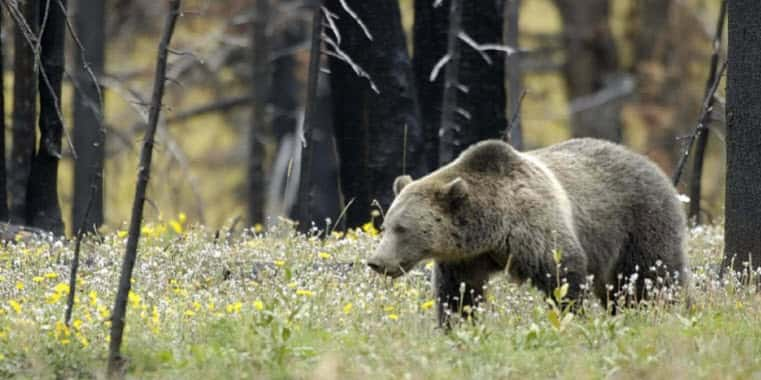by Larry Evans
The U.S. Fish and Wildlife Service is proposing that grizzly bears be removed from protection under the Endangered Species Act within the Greater Yellowstone Ecosystem. While the timing of a delisting is not known, it could happen early in 2017. However, once delisting takes place, the grizzly bear will no longer meet the definition of a predator as currently defined by the federal Livestock Indemnity Program (LIP), and would have an immediate effect on future benefit payments.
Anyone associated with a commercial livestock operation understands that there is a normal animal mortality involved. However, animal deaths caused by weather or predators are not usually considered normal events and can cause financial havoc for some livestock owners.
To help mitigate the financial loss of livestock deaths outside normal mortality events, the 2014 Farm Bill authorized the creation of the federal Livestock Indemnity Program. LIP is designed to pay benefits when an eligible death loss caused by weather, disease or certain predator attacks occurs. The LIP benefit is set at 75 percent of market value for eligible covered livestock as measured the day before an eligible death. The LIP value is established for a year and is reported in tables that list out the single animal benefit amount for all cover livestock groups.
Here’s what else you need to know about LIP:
· Who it covers: LIP is available to a legal owner of eligible livestock on the date that such livestock dies. Commercial contract poultry and swine growers are also covered by LIP. However, LIP is not available for wild, free-roaming and recreational animals.
· Eligibility limits: There is an income eligibility limit to consider. An individual or entity owner is not eligible for payment under LIP if their average adjusted gross income for the year a LIP loss is claimed exceeds $900,000. And, generally, the total maximum annual amount allowed to be received by an individual or entity cannot exceed $125,000, and that limitation would include payments received from certain other assistance programs.
· Event restrictions: An eligible LIP loss event includes those caused by weather,
· Payment,
While there are restrictions, limitations and administrative hurdles, the LIP benefits cannot be ignored. In addition, certain states have livestock loss mitigation programs in place, such as the Montana Livestock Loss Board, that can provide benefits beyond those provided by LIP.
If you would like more information on LIP, the LIP application process, or help with state loss programs, contact Eide Bailly’s agriculture professionals.
Contact information:
Roger Huebner, Partner
406.896.2400
www.eidebailly.com
Content Sponsored by Eide Bailly


